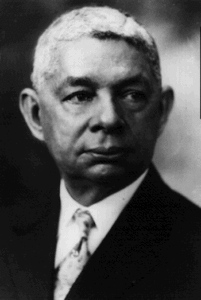
Robert R. Taylor
Robert R. Taylor, a Black architect, was born on this date in 1868.
Born in Wilmington, N.C., Robert Robinson Taylor came from a middle-class family. His father, Henry, was the son of a white slave owner and a Black mother. The elder Taylor had been allowed to go into business for himself before the American Civil War, building cargo ships for trade routes between the United States and South America through the Caribbean. He also built many commercial and residential edifices.
Young Taylor’s early schooling took place at the Williston School and the Gregory Institute, a school for Blacks operated and maintained by the American Missionary Association. After graduating, he worked in his father's building trade business, with his sights on the Massachusetts Institute of Technology (MIT). He was admitted to the regular freshman class on September 23, 1888, although he was a couple of years older than the average freshman because of his work with his father.
Taylor was one of a handful of students from the South. Even the southern whites encountered prejudice, but Blacks were even more so. Few African Americans were part of the MIT community in its early years, despite founder William Barton Rogers's keen interest in race-related issues.
His record at MIT during the four years he attended, from 1888 to 1892, was above the class average; he earned honors in trigonometry, architectural history, differential calculus, and applied mechanics. He never failed a course. He was twice recommended for the Loring Scholarship, which he held for two consecutive academic years. He was the first black to receive an architecture degree from the Massachusetts Institute of Technology.
After graduation, he married Nellie C. Taylor and worked as an architect and educator at Tuskegee Institute until nearly the end of his career. Taylor designed Most buildings built before 1932, including the original Chapel and the library, between 1899 and 1902. For a short period, he was employed by a Cleveland architectural firm. Some believe he had disagreements with Booker T. Washington's dictatorial style at Tuskegee. Though he could have been better employed elsewhere, he retired from Tuskegee in 1935.
Throughout his life, Taylor retained a deep respect for MIT. In 1942, he wrote to the secretary of his MIT class indicating that he had just been released from treatment for an unspecified illness at the Mayo Clinic in Rochester, MN. "Thanks to a kind Providence and skillful physicians," he said, "I am much better now." Taylor lived his life with faith in his race.
Taylor collapsed and died on December 13, 1942, while attending services in the Tuskegee chapel that he had designed and considered his outstanding architectural achievement.
The Crisis of the African American Architect: Conflicting Cultures of Architecture and (Black) Power,
Melvin L. Mitchell,
Copyright, 2002.
ISBN 0595243266